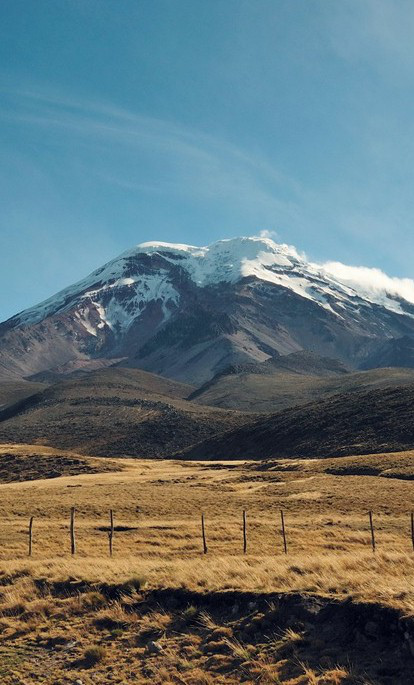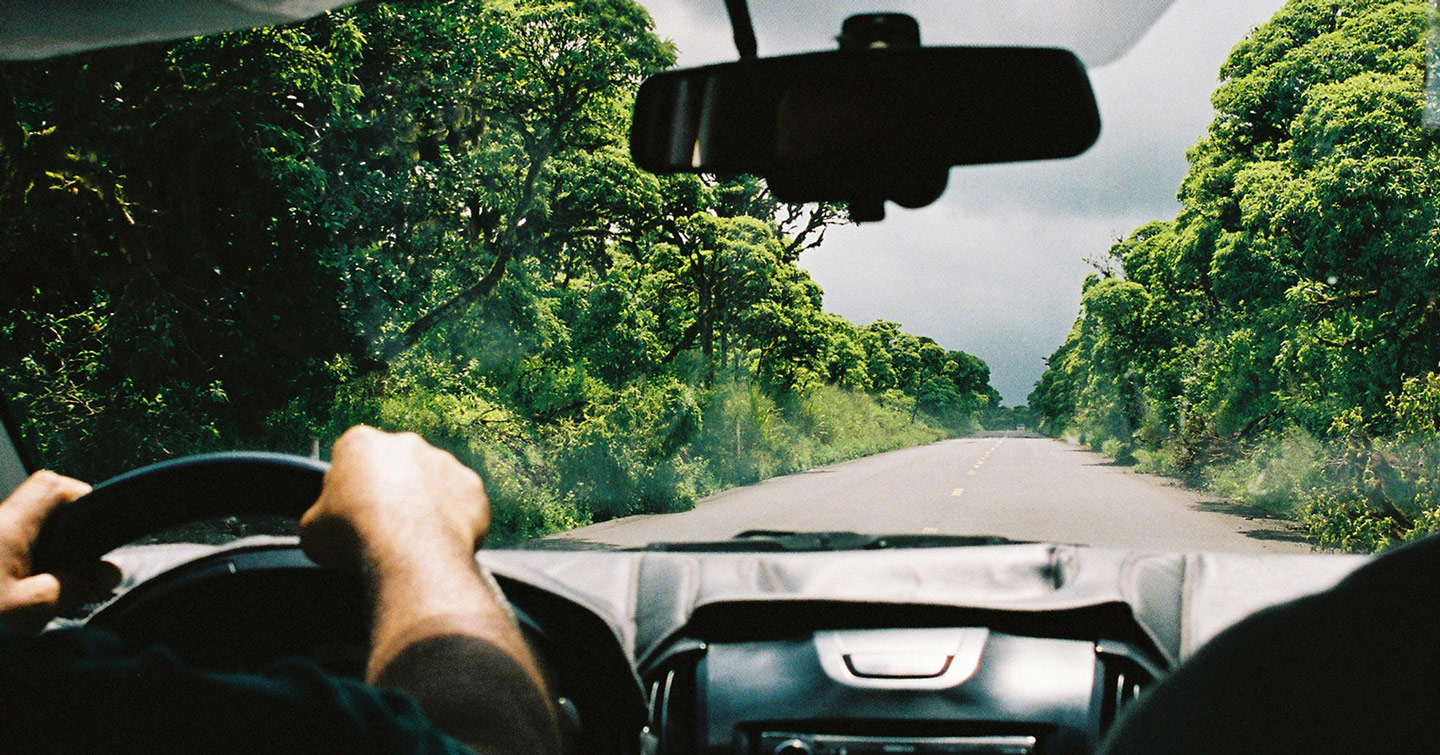
A few suggestions to get the holiday planning process started

The gateway to the Galapagos Islands and one of the most biodiverse countries in the world, Ecuador is bursting with colour and life. Our talented team of consultants will show you that there’s more to this dinky South American nation than the famed (and must-see) islands, however. Whether you’re a wildlife lover or a culture enthusiast, we’ll tailor every detail of your trip to suit you. Be it visiting a weaving collective in a tiny Andean town or trekking through the thick Ecuadorian Amazon, we only work with the best local guides and offer authentic properties ranging from indigenous-run jungle lodges to historic haciendas.
ENQUIRE NOWDiscover different ways to explore Ecuador
Practical advice and inspiration to help you prepare for your holiday
From canoeing down the Amazon to hiking and biking on volcanoes in the Andes, our clued-up consultants have experienced a host of Ecuadorian adventures, and so are perfectly placed to make recommendations for your own trip. We’re passionate about this compact country’s delights and will use our extensive expertise to design your dream Ecuador holiday. Whether island-hopping the Galapagos aboard a luxury boat or exploring hidden gems in Quito with a knowledgeable guide, our friendly in-country Concierge is always on hand with insider intel to enrich your trip.

Two cordilleras (ranges) of the Andes run north to south and form the Avenue of the Volcanoes, including Cotopaxi, the highest active volcano in the world. Within this dramatic landscape Ecuador has many national parks and reserves, notably Machalilla on the coast, Isla del Plata and its pre-Columbian ruins, Sangay with its rare species, and Pasochoa and Podocarpus for flora. The country is also renowned for its colourful markets, and many, such as Otavalo, are within reach of Quito in the Central Valley. At the southern end of the valley you’ll find Cuenca, an Inca site filled with pink marble colonial buildings. From here, don't miss the Incas' Ingapirca.
Elsewhere, Quito was the first UNESCO World Heritage city, built among the foothills of the Pichincha Volcano, which you can really appreciate as you come into land. This long linear city sits at 8,500ft so you definitely feel the altitude, but as a result the sky is often incredibly blue and bright. This is by no means the liveliest city in Latin America (that accolade would probably go to Cartagena) but the colonial city centre is charming and if you happen to be there on a Saturday many locals from the highlands congregate in Plaza San Francisco. Discover the capital with the help of a local guide, who will take to the top of El Panecillo for panoramic views across the metropolis, before heading into the hustle and bustle of Mariscal Artisanal Market. As one of the city’s oldest markets, Mariscal is teeming with traditional souvenirs and authentic artisanal offerings, which you could spend all day perusing.
Within striking distance of Quito are the beautiful Highlands, and driving north out of the city involves being treated to great views of the voluminous volcanoes and peaks of the Andes. It also means crossing the equator into the Northern Hemisphere, taking in the Mitad del Mundo (centre of the world) monument and museum. Also worth a visit is Tulipe – home to archaeological ruins from the pre-Incan Yumbos civilisation. The Highlands themselves are a playground for adventurous types keen to climb some serious peaks, or to explore the extraordinary biosphere of the Andean cloud forest.
Speaking of extraordinary biospheres, it's important not to forget that Ecuador is also one of those lucky countries to include a portion of the upper Amazon rainforest, which is just a thirty minute flight from Quito. Stay in fascinating ecolodges or on board a luxury river cruiser to explore the Amazon. Expect to encounter plenty of monkeys, colourful toco toucans and leisurely sloths among the lush leafy treetops of the rainforest. The Amazon’s waterways are home to more than 600 species of fish, as well as over 250 varieties of reptiles and amphibians, including caiman crocodiles, which are endemic to Latin America).
Calling all wildlife lovers, seasoned snorkellers and underwater explorers, Ecuador holidays offer an abundance of adventure-focused holiday experiences, both on land and in the ocean. As one of the most biodiverse destinations on the planet, it goes without saying that the Galapagos Islands are a must-visit for those in search of wild and whacky creatures. Baños – widely regarded as the ‘gateway to the Amazon’ – is a hub of adventure-based activities (including white-water rafting and ziplining), which makes a great day trip worth adding to any thrill-seekers' travel itinerary. Those in search of authentic experiences and a taste of traditional Ecuadorian culture should include Quito, Cuenca and Guayaquil in their trip, while history buffs and archaeological aficionados will appreciate the ancient Incan ruins scattered across the Sierra.
Six hundred miles off the coast of Ecuador, in the Pacific Ocean, lie the Galapagos Islands, the catalyst for Darwin's theory of evolution. At the risk of slipping into hyperbole, this is one of the most rewarding, most significant destinations in the world. Original Travel consultants have visited the islands on several occasions, and know the best boats for every type of trip from family holidays to dive safaris. Hop between several of the islands – such as Santa Cruz, Isabela, Eden and San Cristobal – or stay on board a luxury vessel, which can act as a floating home during your island-hopping adventure. Each new destination will add to the encyclopaedia of wildlife sightings; Isabela is home to pink flamingos, Santiago’s beaches are filled with fur sea lions and marine iguanas inhabit Fernandina’s beachfront.
The country boasts an impressive 11 national parks and 25 reserves, each outstanding areas of natural beauty and valuable conservation areas. Travel to Cayambe Coca National Park, a patchwork of cloud forest, volcanoes and hot springs, which plays host to Andean condors, armadillos and bears. Spend a day in Cotopaxi National Park, where you’ll find the world’s highest active volcano, as well as an abundance of hiking and mountain-biking trails. Sun seekers will want to visit Machalilla National Park, home to some of the nation’s most secluded and idyllic beaches, while other sun-drenched spots include Playa Escondida and Tonsupa, in the Esmeraldas region.
Named for its position on the equator, Ecuador’s climate and weather varies from region to region, with different parts of the country each possessing their own micro-climate. Altitude tends to have more bearing over temperature here than the season (which are opposite to ours here in the UK), and it generally gets colder at higher altitudes. While there’s no bad time of year to visit, the Ecuadorian rainy season tends to fall between October and May, while the period from June to September is usually drier. Head to our best time to visit Ecuador guide page for more.

Our team of destination experts will get to know you and your unique requirements for your holiday

We work with you to build an ultra-personalised holiday itinerary with your choice of accommodation, experiences and activities

All of our holidays include little extras designed to make a big difference to your trip, from fast-tracking you through airport check-in and security to our network of local Concierges